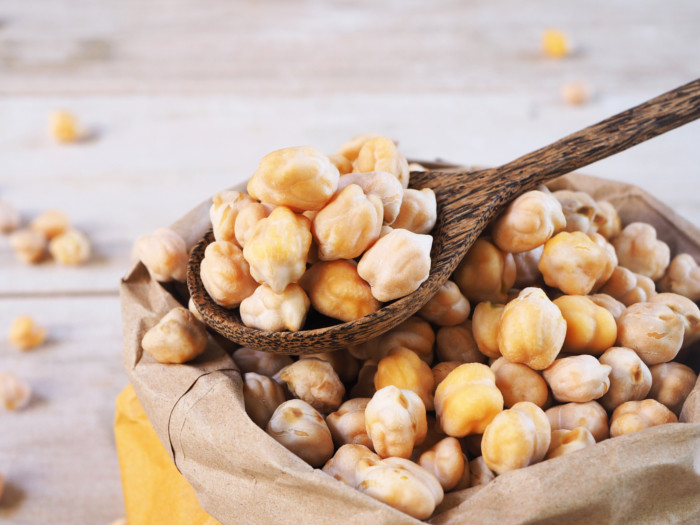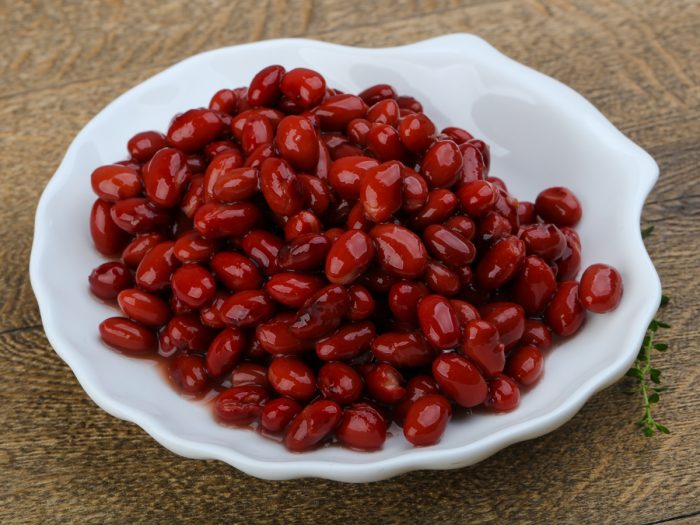
You’ll almost never find our kitchens without a can or two of black beans stocked in the pantry. This versatile ingredient can be used in so many different ways. From soups and chilis to enchiladas and salads, the possibilities are seemingly endless. We chose our 20 favorite black bean recipes to get you started with something new.
1. Spicy Salmon Black Bean Salad
Hot smoked salmon is a salty, meaty counterpart to earthy black beans. This is a salad that can be tossed together in minutes and is equally satisfying for dinner as it is for lunch.

(Image credit: Maria Siriano)
2. Easy Roasted Vegetable Enchiladas
These lightened-up enchiladas are ones you can feel good about serving your family. They’re filled with black beans and roasted veggies and topped with a creamy cilantro-lime yogurt sauce.

(Image credit: Lauren Volo)
3. 10-Minute Black Bean Tacos
Dinner in 10 minutes sounds like just the kind of thing we can get behind on a busy weeknight. These rely on canned beans and a few store-bought condiments to come together fast.

(Image credit: Joe Lingeman)
4. Cuban Black Bean Soup
To make this soup the right way, use dried black beans and let them soak overnight. You’ll also want to give it ample time to cook on the stove so, really, it makes a better weekend recipe. Finally, don’t skimp on the vinegar — it’s what gives the soup that little extra kick.

(Image credit: Joe Lingeman)
5. Roasted Squash, Corn, and Black Bean Enchiladas
Start with pre-cut butternut squash to make these veggie-filled enchiladas much faster and easier to bring to the dinner table. You can also swap in store-bought enchilada sauce if you’d rather not bother with making your own.

(Image credit: Lauren Volo)
6. Loaded Black Bean Nachos
A couple of cans of black beans add protein to this sheet pan full of ooey, gooey nachos. Top everything with a couple dollops of Greek yogurt and you can feel good about eating chips for dinner.

(Image credit: Michaela Cisney)
7. Chilled Black Bean, Feta & Cucumber Salad
This is one of those salads that actually gets better with more time spent in the fridge to let the dressing work its magic. We recommend making a big batch over the weekend and enjoying it for lunches all week.

(Image credit: Nick Evans)
8. Crunchy Black Bean Tacos
These pan-fried tacos are made with soft tortillas and are somewhere between a taco and a quesadilla. You can fill them with anything you want; they are a great way to use up a small amount of leftovers.

(Image credit: Megan Gordon)
9. Black Bean, Sweet Potato, and Quinoa Chili
While the options for vegetarian chili recipes are nearly endless, we’re partial to this one with sweet potatoes (or you could substitute butternut squash) and quinoa. Just remember — you might have to add a bit more water at the end since the quinoa will soak it up.

(Image credit: Emma Christensen)
10. Slow Cooker Black Bean Enchiladas
Slow cooker enchiladas are a bit magical. They might not be the prettiest meal on the block, but they are one of the tastiest. Plus, they are easily adaptable, so you can basically clean out your fridge and end up with a mouth-watering meal.

(Image credit: Kimberley Hasselbrink)
11. Black Bean Burgers with Chipotle Ketchup
What really makes these veggie burgers stand out is the jazzed-up ketchup, which is sweet and smoky and dangerously addictive.

(Image credit: Emily Han)
12. Kale and Black Bean Tacos with Chimichurri
No, chimichurri wasn’t originally intended for vegan tacos, but the garlicky sauce adds a whole new dimension to these tasty tacos. Of course, the big chunks of avocado and sautéed kale don’t hurt either.

(Image credit: Kimberley Hasselbrink)
13. Baked Black Bean and Avocado Burritos
Somewhere between a burrito and an enchilada, these avocado and black bean delights reside. You can play around with additional fillings, like sautéed peppers or greens; make sure you taste-test the filling to get the spices to your liking.

(Image credit: Joanna Miller)
14. Vegetarian Black Bean Espresso Chili
It can be hard to get that rich, meaty taste in a vegetarian chili, but the addition of instant espresso powder adds a depth that most vegetarian chilis lack. Try making this version, or adding a little espresso powder to your own favorite chili recipe, to get the full effect.

(Image credit: Emma Christensen)
15. Southwestern Pizza with Black Beans and Corn
One of our favorite unexpected black bean recipes is this Southwestern pizza. In place of traditional red sauce is a black bean mash. The whole pizza gets topped with corn, peppers, and a healthy dollop of avocado cream.

(Image credit: Maria Siriano)
16. Smoky Sweet Potato & Black Bean Casserole
Smoked paprika, fire-roasted diced tomatoes, and smoked mozzarella all join forces here to create a comforting casserole that has serious depth of flavor.

(Image credit: Chungah Rhee)
17. Sheet Pan Sweet Potato & Black Bean Hash
This hearty hash is perfect for feeding a weekend brunch crowd. Everything cooks on one sheet pan, which means you can spend time drinking mimosas with your guests instead of standing over the stove.

(Image credit: Joe Lingeman)
18. Slow Cooker Black Bean Chili
A bit of unsweetened cocoa power lends deep, rich flavor to this meatless chili. Let it cook slowly while you’re at work and you’ll be rewarded with a comforting meal as soon as you walk through the door.

(Image credit: Guy Ambrosino)
19. Black Beans and Plantains Breakfast Bowl
Make a big batch of these Cuban-style black beans ahead of time and when morning comes all you’ll need to do is fry up a plantain and some eggs while you reheat them.

(Image credit: Emma Christensen)
20. Freezer-Friendly Roasted Vegetable Burritos with Black Beans and Rice
These hearty burritos are a miracle meal when you discover them tucked away in the freezer for a quick lunch or dinner. They’ll keep well for up to 3 months, so it might be worth doubling the recipe if you have a large family.
Organic Rice, Grains & Beans is available to purchase at SFMart.com

















